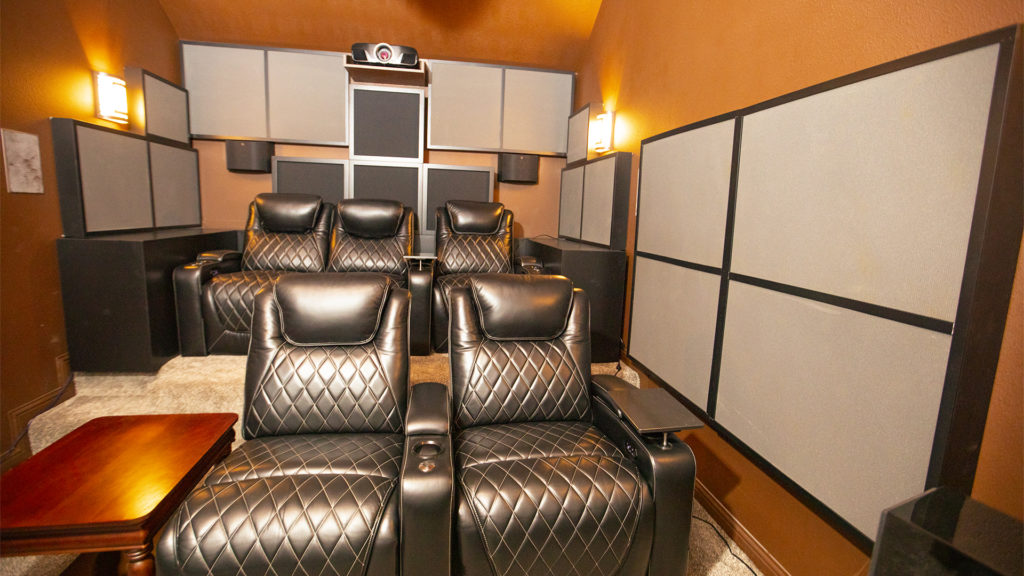Table of Contents

Essential Functions of Home Theater Chairs
Home theater chairs must perform many functions. They must support people and their numerous activities. They must also allow for the ability to hear the multiple channels clearly that home theater systems demand. Home theater chairs must be comfortable and provide the features that people need such as cup holders and foot rests.
Home theater chairs must have low backs that will allow for the side and rear channel energy to be heard clearly without getting in the way of the sound fields that are distributed by multiple channels. Home theater chairs and their designs must focus on comfort and performance.

Managing Front Channel Energy and Seating Position
With any home theater, we have three sets of energy that we must manage both with acoustical treatment and the seated position. We have the front of the theater speakers. These are the left and right channels along with the center channel. These three speaker sources provide almost 80% of the energy we hear the audio that is associated with the video in a theater presentation.
Home theater chairs must be at the correct height and comfort level to allow for the home theater chairs to be viable. The height of any home theater chair must be at the proper height to align with the front of the house speakers. They must also have a low back that will not interfere with the sound energy generated from the side and rear channels.

Importance of Low-Back Chairs for Optimal Sound Quality
Home theater chairs must have a lower back than conventional chairs. The reason for this is that the ears must be able to receive energy from multiple channels and multiple directions. We have side channels and rear channels that are sending information to the ears. With a home theater chair that has a high back, you are restricting this data from reaching your ears.
The total sound quality you receive from your home theater is directly related to the set up along with the ability to process information from multiple directions. The distance from the front channel speakers to your home theater chair is critical along with the distances from the side and rear channels.

Challenges of Low Frequencies in Home Theaters
Home theaters are all about low frequencies. We have car crashes and explosions to contend with. The energy in these explosions is always full of lower frequencies and most of this energy is placed within rooms that their dimensions can not support. When you have 40 hz. energy that is 28′ long and you have room dimensions that are 11′ or 12′, this 28′ energy will not fit into the room.
When the wavelength does not fit into the dimensions within your room, you have room modes. Room modes can exaggerate certain frequencies and completely eliminate others from being heard. With room modes, you can hear too much of some sounds or none at all.

Achieving High Resolution in Audio and Video
The acoustic goal in any room that deals with music voice and video is resolution. We want to see and hear everything. We want every detail of an actor’s face so we can relate to the emotion of the situation. We want to hear all the voices that are another element in transcribing internal emotions. Both audio and video resolution are required in any home theater.
Part of those requirements include a home theater chair that allows for the side and rear channel energies to be heard clearly without a high back that hinders the transmission of sound energies from all channels such as Dolby Atmos. At Acoustic Fields, we can assist you with all the proper solutions to the many issues in any audio project.







